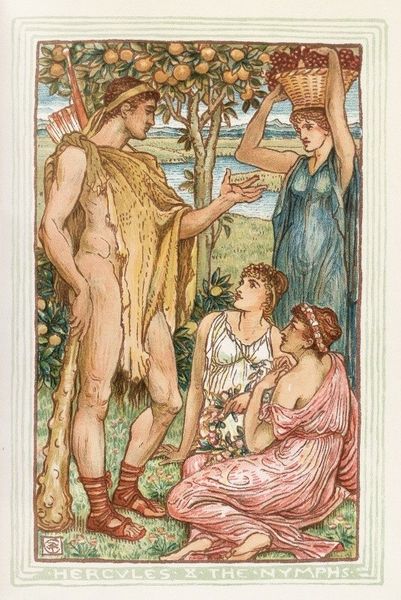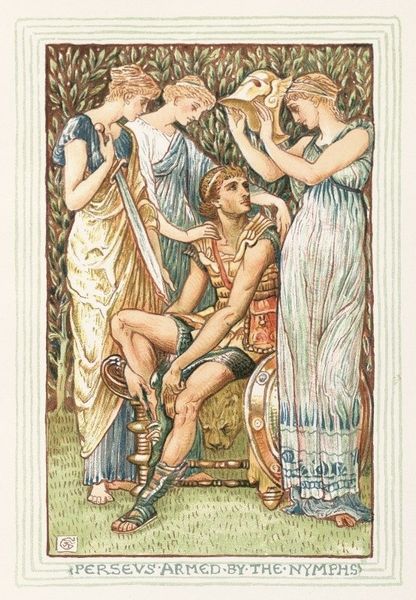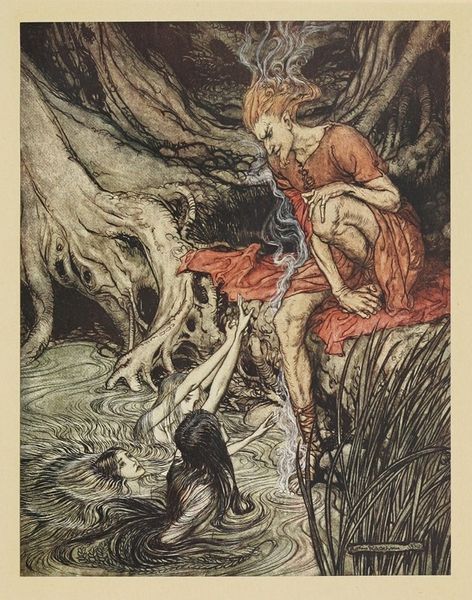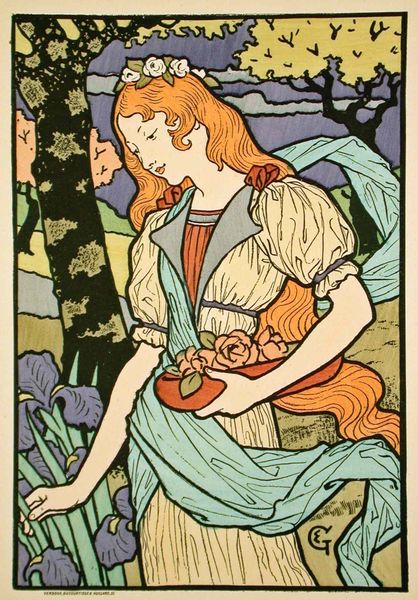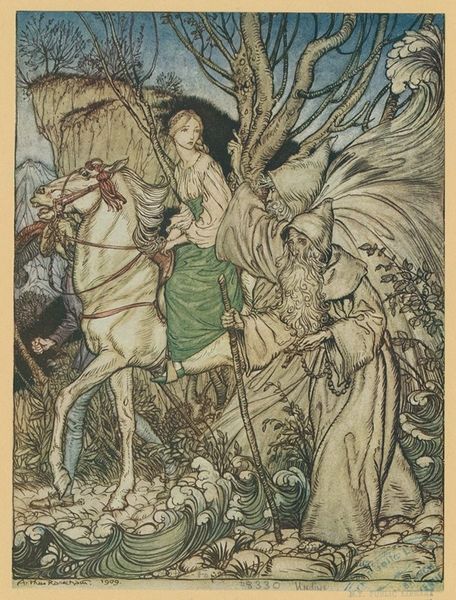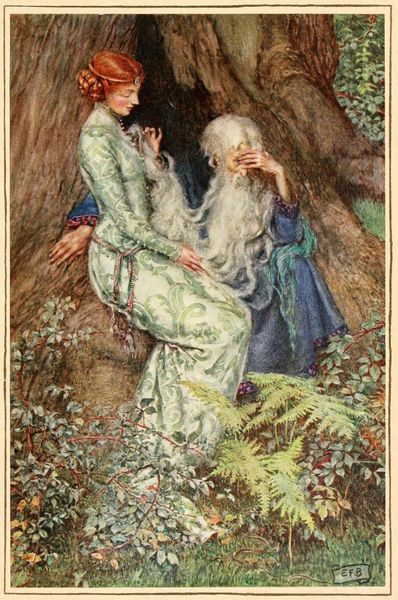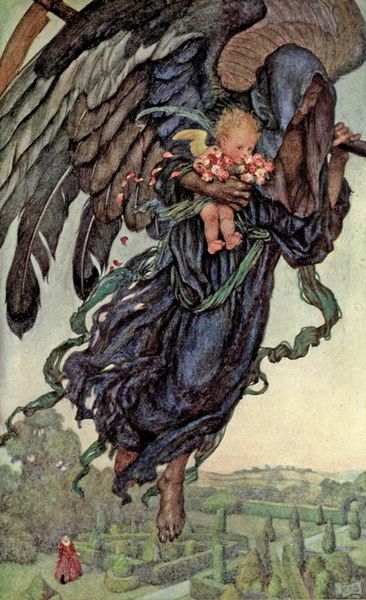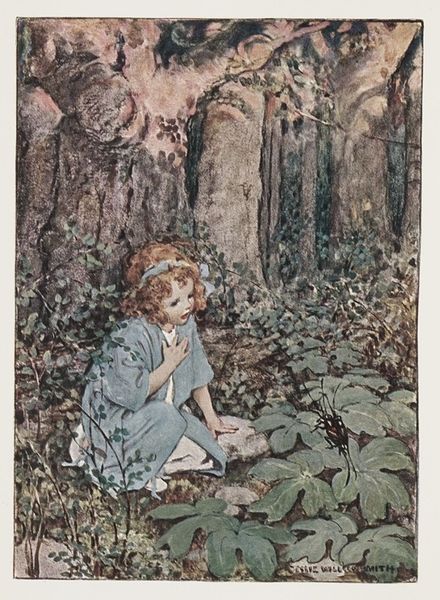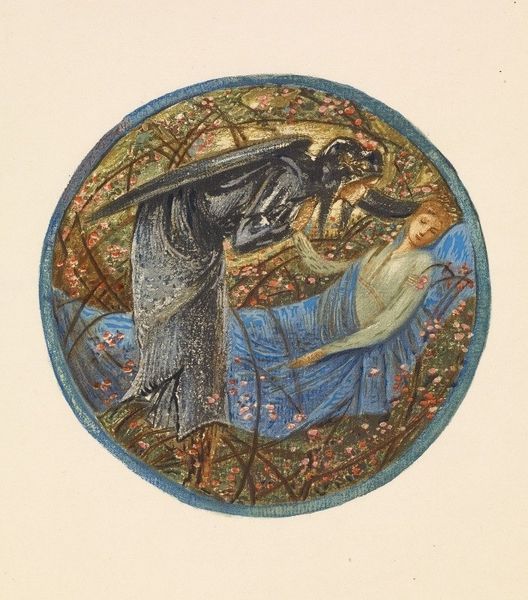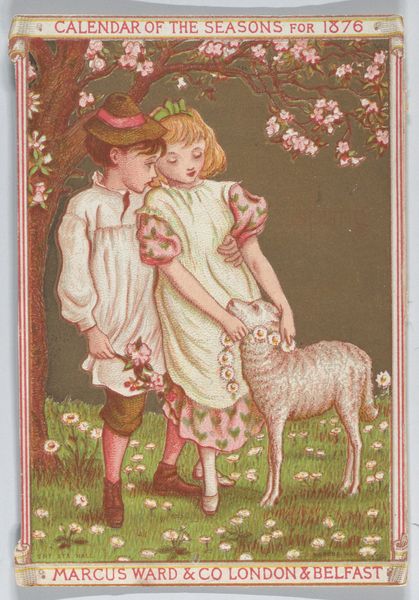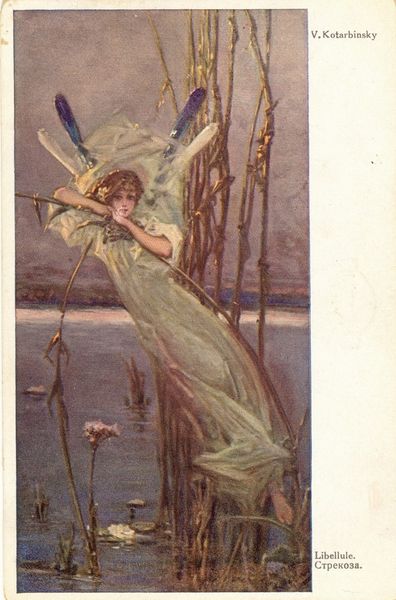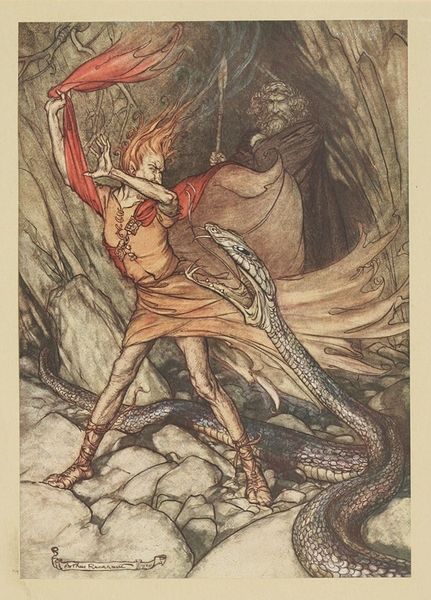
watercolor
#
landscape
#
figuration
#
watercolor
#
romanticism
#
watercolour illustration
#
history-painting
#
watercolor
Copyright: Public domain
Curator: Welcome. We’re looking at a watercolor by Walter Crane entitled "The wind - God sent a gust from the South.” Editor: Immediately, I’m struck by the dynamism in what should be a very still medium. There’s almost a violent movement implied through the figures’ positioning. Curator: Yes, it seems inspired by classical allegories and maybe even the Pre-Raphaelites, doesn't it? We see an almost angelic figure blowing a horn, ostensibly creating the wind. A second man leans down towards a fallen third, possibly attempting to assist him, but maybe instead doing more damage. The social and class implications might indicate ideas about care, responsibility and fate. Editor: I wonder about Crane’s process here. Look at the precision of the lines, then compare that to the looser rendering of the landscape. It almost seems he considered the figures and the wind more carefully than the background in terms of time spent working and intention behind its production. Curator: Exactly. Crane himself moved among socialist circles, critiquing industry's impact on artistic crafts and working to elevate art’s purpose. Is this a painting about political disruption or perhaps just about artistic virtue? Editor: It seems those themes were probably on his mind when he created the painting. Note also that the paper has a patina of age. You see some discoloration across its surface; the piece may have been crafted for practical purposes – to illustrate a text – rather than purely as "high art" for a gallery space. Curator: Absolutely, understanding this in relation to Crane's work towards more just distribution models within design sheds some new light. He advocated integrating artistic practice within daily life to confront hierarchical boundaries. Editor: And it makes you wonder what contemporary audiences made of Crane’s social activism when they came to this kind of idyllic watercolour? Did this medium help his more radical audiences engage more freely? Curator: Those tensions—between romantic aesthetics and pressing political concerns—characterize much of late nineteenth-century artistic production, but I can understand how art can become this catalyst to view politics, aesthetics and society in an easier way, but with just as much meaning behind them. Editor: Perhaps by questioning the artist’s priorities in that way, as they pertain to choice of material and process, we might gain a fuller sense of the context in which the work emerged, as well as insights that continue to matter now.
Comments
No comments
Be the first to comment and join the conversation on the ultimate creative platform.

